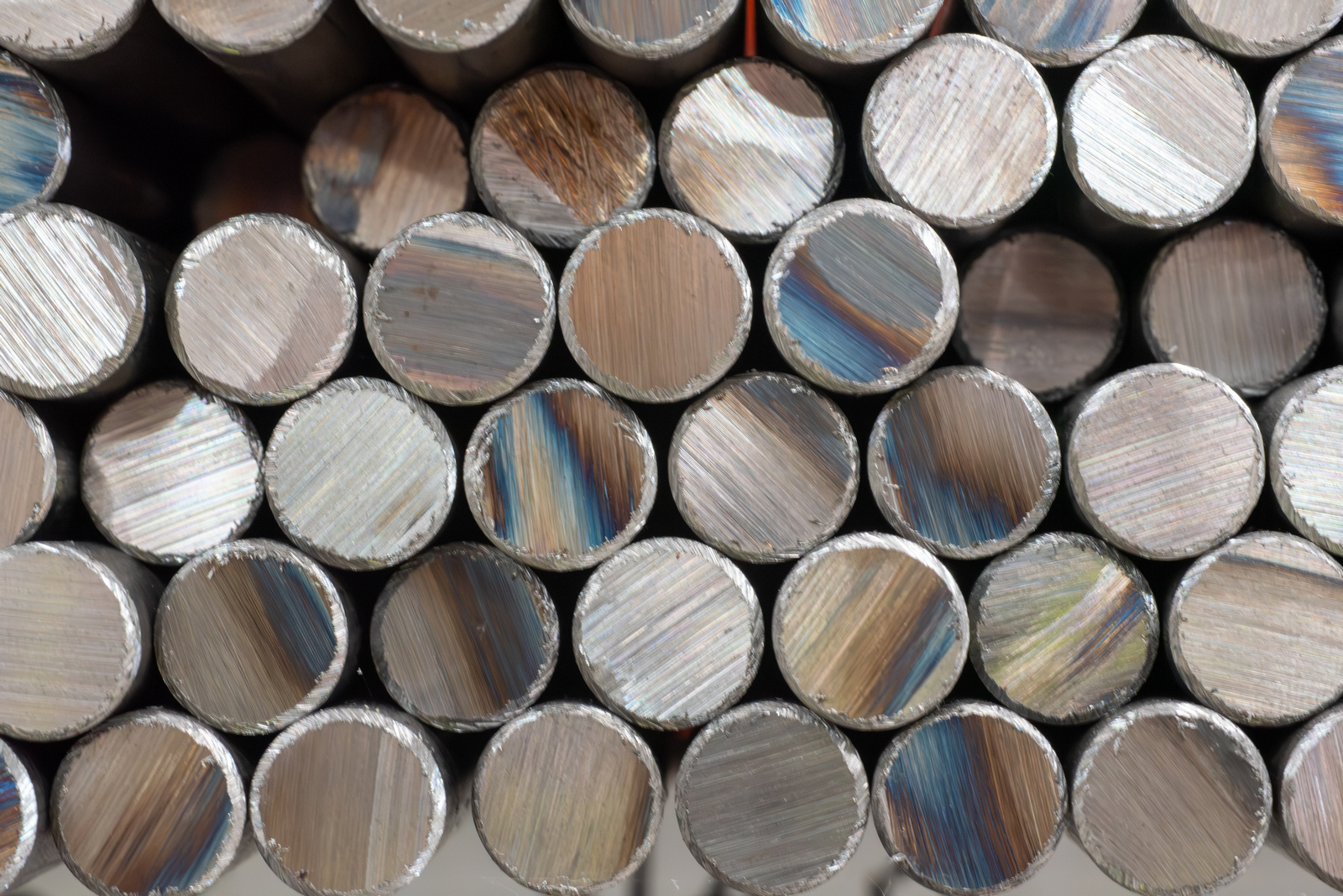What Is Monel 400? -Must-Knows Of Monel Alloy
 Apr 22,2025
Apr 22,2025

Monel covers the need for a durable alloy that can withstand extreme conditions. It has utilized in a range of applications specially in chemical processing and marine industries. Monel 400 is basically nickle alloy that has high corrosion resistance and strength. It has many other extraordinary features and applications which are covered in this article in detail.
What Is Monel 400 Exactly?
Monel 400 (UNS N04400) is a nickle-copper based alloy with 66%Ni and 31.5%Cu with other element in minor amount. It is famous for its corrosion resistance and strength at higher temperatures. Monel alloy 400 has excellent stress corrosion resistance and pitting corrosion resistance, ideal for marine applications.
Overview of Nickel-Copper Alloys
Ni-Cu alloy is a solid-solution alloy that are hardened only cold working. These have high toughness and resistance over a wide range of temperatures. These are also known for corrosion resistance to marine harsh environment.
Most Common Monel Grades
Some of the very common Monel grades are as:
|
Monel alloys |
Grades |
Composition |
|
Monel 400 |
UNS-N0440 |
Ni 63-70%, Cu 30%, Al 2.5-3%, Fe 2%, Mn 1.5% |
|
Monel k500 |
UNS-N05500 |
Ni 63%, Cu 33%, Al 2.3-3.15%, Fe 2%, Mn 1.5% |
|
MonelR405 |
UNS-N04005 |
Ni 63%, Cu 28-34%, C 3%, Fe 2.5%, Mn 2% |
|
Monel 404 |
UNS-N04404 |
Ni 57%, Cu 45.5%, C 0.15%, Fe 0.5%, Mn 0.1% |
|
Monel 401 |
UNS-N04401 |
Ni 40-45%, Cu 50%, Fe 0.75%, Mn 2% |
|
Monel 502 |
UNS-N04502 |
Ni 63-70%, Cu 33%, Al .35%, Fe 2%, Mn 1.5% |

Development and History of Monel 400
The international Nickle company developed Monel alloy 400 in 1905. it was named after the president of company "Monell" and patented in 1906. It is highly demanding alloy in different industries due to its durability and resistance.
Monel 400 Chemical Composition and Alloying Elements
Monel 400 chemical composition is a combination of Nickle and Copper in a major amount and other secondary elements like iron, manganese, silicon, carbon and sulfur.
What Are The Primary Components of Monel 400?
The primary elements in Monel 400 chemical composition are Ni 63-70% and Cu 28-34%. nickle is the reason of high strength, durability and corrosion resistance of Monel 400. Copper increases the resistance in reducing conditions and enhances strength. While the other elements improves the overall performance of alloy
Monel 400 vs. Monel K500 vs. Inconel
Monel 400 and Monel k500 are nickle-copper alloys. Monel 400 properties offers high strength and hardness while K500 is a precipitation hardened variable of Monel 400 material but has high corrosion resistance in marine and chemical environments. However, Inconel is a nickle-chromium alloy and has resistance to high temperature and high-stress conditions. It also has remarkable oxidation and creep resistance.
Is Monel 400 or K500 Magnetic?
Monel alloy 400 is slightly magnetic at lower temperature because it has Curie temperature near room temperature. However, it losses its magnetism completely at higher temperature. K500 is non-magnetic but its magnetic properties can be developed at the surface during processing.
Influence of Minor Elements
The secondary elements like iron increases stability, manganese increases stress corrosion cracking resistance and all the trace elements like silicon or carbon help refining the microstructure and improve the overall properties alloy.
Monel 400 Physical and Mechanical Properties
All the important Monel 400 properties that affects its applications are as:
Density and Melting Point
Monel 400 has density of 8.7g/cm3 and has high melting temperature of 1300-1350.This has an effect on its high temperature resistance
Tensile Strength and Hardness
The tensile strength of superalloy 400 in annealed conditions is from 517-620MPa. It is also a hard material with up to 215HB Brinell hardness.
Ductility and Toughness
Monel 400 material shows high ductility and toughness are low temperatures and shows excellent ductility at cryogenic temperatures. It does not have ductile-to-brittle transitions and can maintain strength and toughness for a long range of temperature.
Electrical Conductivity
Monel 400 material has electrical conductivity of 34% IACS which is equal to pure copper. This implies it is more conductive than stainless steel. At room temperatre its 19.8MS/m
Is Monel 400 Corrosion Resistant?-Characteristics
Yes, Monel 400 properties shows highly corrosion resistance. It has excellent resistance in seawater, alkaline solutions and acids in reducing environments.
Performance in Marine Environments
Monel 400 has high resistance in seawater in freshwater but slightly lower in flowing water and high ability to resist stress corrosion cracking. This is why it is used in propeller shafts, seawater fasteners and valves.
Behavior in Acidic and Alkaline Conditions
Monel 400 has higher resistance to reducing media like hydroflouric acid, sulfuric acid and hydrochloric acid as compared to oxidizing media under reducing conditions this material performs very well in alkaline solution and saltwater
Thermal Properties and Operating Temperatures
The thermal properties and affect of different temperature range on its performance is explained below:
Thermal Conductivity
Thermal conductivity of this superalloy is around 21.7W/m-K at room temperature. This value can be slightly different based on operating temperature and surrounding environment. For example, if the temperature increases, thermal conductivity of Monel 400 also increase.
Performance at High Temperatures
Monel 400 has high resistance to elevated temperatures and perform very well. It maintains its strength and toughness up to 540°C in oxidizing and reducing conditions. It also retains its features at cryogenic temperature and does not show ductile-to-brittle transition unlike ferrous alloys.
What Is Monel 400 Used For? -Industrial Applications
Monel 400 is widely used in industries due to high toughness, strength and corrosion resistance in harsh environments. Common applications are marine engineering, chemical ad oil and gas industries.
Marine Engineering
This alloy widely utilized in seawater pumps, valves,piping, heat exchangers and propeller shaft due to high resistance to seawater corrosion. This material resists the corrosive fluids and high temperature without compromising its performance. In heat exchangers, it is preferred due to it thermal conductivity.
Chemical and Hydrocarbon Processing
Monel 400 is utilized in handling equipment of acids, alkaline and caustics and other chemical. It is preferred due to its high temperature and pressure resistance. In oil and gas industries, it is utilized in petroleum distillation towers, piping and for handling hydrocarbons.
How To Machine Monel 400? -Fabrication and Machining Considerations
Machining alloy 400 can be challenging due to high strength and require specialized tool selection and machining parameters. Conventional machining can be sued but CNC machining is preferred.
Workability and Forming Techniques
Monel 400 has high work hardening tendency which makes its fabrication difficult. Forging and hot working require controlled procedure and specific temperature range from 648-1176°C. cold working can be performed with soft die material for good finishing.
Is Monel 400 Hard To Machine?
Yes, Monel 400 has difficult machining as compared to steels. It work-hardens quickly and require low speed and feed rate during CNC machining. High strength makes traditional machining difficult and has high tool wear and tear. Effective CNC machining results can be achieved by high depth of cut, feed rate with low side rake angle.
Therefore, when choosing an appropriate manufacturer to machine Monel 400, one of the things to consider is whether it has the ability to process hard metals. For example, TUOFA CNC Machining Online is particularly good at processing hard metals (such as titanium alloys, etc.). This is a capability that many CNC factory workshops do not have.
How To Weld Monel 400? -Step-to-Step
Careful preparation and techniques are required to weld this superalloy. GTAW is normal considered with proper filler metal and welding parameters.
- Clean the weld surface, extending 2 inches beyond the joint, to remove an dirt or grease and oil.
- Use appropriate filler metal by selecting closest to similar essential chemistry and prepare the edges to specific joint design like butt joint, lap or tee joints.
- Use inert gas like argon and helium for gas tungsten arc welding and start the procedure by keeping the short arc length.
- Use low acetylene flame and adjust the current, speed according material thickness
- Remove the slag between the weld pass and remove heat tint if necessary.
- After final pass, inspect the weld to detect any crack, porosity or incomplete fusion.
Is It More Worthwhile To Use Monel 400 Than Other Alternatives?
It depends on application and requirements of alloy but Monel 400 offers high corrosion resistance for marine and chemical processing environments than stainless steel and offers good features as their alternative like inconel and Hastealloys. .
- Material Cost
Alloy 400 is cheaper than inconel, hastealloy and offer high corrosion resistance and high temperature resistance. But it is expensive than stainless steel.
- Lifecycle and Maintenance Costs
Initial cost and processing cost of Monel 400 is higher as compared to stainless steel but other nickle based alloys have generally same initial cost but lower maintenance cost. However, high corrosion resistance of Monel 400 leads to slightly higher maintenance and replacement cost in harsh environments.
|
Features |
Monel 400 |
Hastealloy |
Inconel |
Stainless steel |
|
Corrosion resistance |
higher |
high |
high |
Low |
|
durability |
High |
High |
High |
Low |
|
Materia cost |
Low |
High |
High |
Low |
|
Initial cost |
High |
higher |
Higher |
Low |
|
Lifecycle |
High |
high |
High |
Low |
|
Maiantecnae cost |
High |
High |
High |
Low |
Conclusion
Alloy 400 is nickel-copper based superalloy. It is famous for its high corrosion resistance, durability, high strength and high temperature resistance. It is a solid-solution alloy that is only hardened by cold working. Common applications of Monel 400 are chemical processing and oil and gas industries, marine engineering in heat exchangers, pipping, pumps and valves.
FAQs
What is Monel 400 Equivalent Material?
Monel 400 is equivalent to UNS-N04400 and ASTM-B164, BS-3076-NA13 and AMS-457
Can Monel 400 Be Used in Aerospace?
Yes, it is used on aerospace applications due to high strength and corrosion resistance at higher temperatures. It is utilized in structural parts, frames and fasteners.
Is Monel 400 better than stainless steel 316?
Alloy 400 is better than 316 stainless steel due to high corrosion resistance in harsh environments, marine and acidic conditions. But it has high initial cost and maintenance cost.
 Tel/WeChat:
Tel/WeChat:  Email:
Email: 
 Home
Home
 What’s EN AW-6082 T6 Aluminum Alloy: Key Properties and Applications
What’s EN AW-6082 T6 Aluminum Alloy: Key Properties and Applications 







